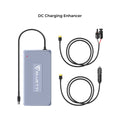As the world advances towards green power, electric cars have emerged as a booming contributor to the automobile industry. In Australia, this transition has been picking up due to ecological concerns, skyrocketing fuel costs, and government backing of electric vehicles(EVs). With Australia's automakers recklessly putting money into the technology of electric cars, there is a wide array of EVs, from sporty SUVs to svelte sedans.
However, potential customers frequently express concern about the upfront cost of electric cars. Making an enlightened choice begins with being aware of all the variables that go into these costs. Despite the many benefits, the initial expense is a deterrent for many buyers. This article will take you through the cost of electric cars in Australia and explain how you can save your bucks while making an EV purchase.
Do Electric Vehicles Truly Outperform Petrol/Diesel Vehicles?
Global initiatives are underway to quell the catastrophic effects of climate change and global warming. In turn, EVs have been gaining momentum over petrol/diesel vehicles. There is a rationale for switching to electric vehicles. Let's unveil a few reasons behind this dramatic shift.
Government Support
Governments worldwide provide subsidies and enforce EV industry regulations. Because electric vehicles are more environmentally and pocket-friendly, changing the trends globally.
Money Saving
Any vehicle's operating cost makes up a considerable part of the total cost of ownership. The maintenance cost of EVs is meager, which adds to their pros. Usually, the EV has an upkeep cost of one-fourth of a diesel/petrol car in the market.
Eco-friendly
Electric vehicles have aided in raising air quality because they produce no exhaust fumes, unlike diesel vehicles. Unlike diesel cars, they don't expel any greenhouse gases and thus have no negative impact on air pollution.
Easy to Drive
Since EVs lack a gear system, they are easier to drive and offer more incredible speed over longer distances as a benefit.
Electric Cars are Skyrocketing In Australia
The demand for electric vehicles has increased dramatically over the past two years due to government incentives, cutting-edge technology, and rising gas prices. Australia will have a hundred thousand EVs on the road this year. According to projections, the market for electric vehicles will generate US$2.9 billion in revenue in 2023.
To promote the use of electric automobiles and increase their popularity, the Aussie government has created programs like refunds and exemptions of registration charges or stamp tax for EV users. Owners now have more excellent financial options for EVs thanks to incentives like the exemption from the fringe benefits tax on renewed leasing.
With aims to make all new cars purchased in the country completely emissions-free by 2030, Australia's National Electric Vehicle Strategy is ready to revolutionize the market for green cars.
With the advent of fast charging technology, the accessibility and the standard of the charging stations have substantially improved throughout Australian regions.
How Much Would You Save Owning an EV?

The masses frequently debate the benefits and drawbacks of electric automobiles over gasoline-powered cars. Costs quickly rank among the most important topics of conversation.
Are EVs cost-effective? Let's break down this topic and discover.
Upfront expenses
The cost of the vehicle is the immediate thing that occupies your mind. Compared to conventional internal combustion vehicles, EVs typically cost more. The plus side is that EVs are becoming more affordable every year. The primary reason for this is the rising demand for electric vehicles (EVs), which encourages the production of more parts in bulk at a lower price.
Popular companies like Tesla revealed another price reduction for the most popular electric automobile, the Tesla Model 3. Before the on-road expenses, the cost decreased to a historic low of $59,990.That will likely be true shortly. The cost of EVs will decrease as more are put up for sale each year.
Cost per Km
According to the Australian Electric Vehicle Council, using an EV can save you about 70% more than driving a car that runs on gasoline. Driving an EV will save you, on average, $1,600 a year.
They are taking into account that the typical Australian drives 15,000 miles annually. According to a straightforward estimate, petrol/diesel cars will cost $0.14 per km, whereas electricity for EVs will cost $0.04 per kilometer. If someone chooses to use solar energy instead of grid power, their actual cost to charge an EV could further decrease to practically nil.
Cost of Upkeep
As opposed to fuel-fed vehicles, EVs have fewer functioning components, making them much less expensive in upkeep. As a result, the EVs require less frequent service and component replacement, which lowers overall maintenance expenses.
The Electric Vehicle Council claims EV maintenance expenses are as low as 2 cents per kilometer with typical daily use. While the expense of maintaining a gasoline-powered car is roughly 7 cents per mile,
Value-for-money Electric Cars In Australia
Although EV interest is at a record-high level, the initial expense continues to pose a barrier. In the long run, EVs could cost less than vehicles powered by internal combustion engines (ICEs). Here is a list of Australia's most affordable electric vehicles to assist you in getting behind the wheel of one sooner.
BYD Dolphin

BYD's Australian distributor, EVDirect, marketed the Dolphin in the country this February with a price of $35,000 to $40,000 and a concentration on ride-share companies.
The battery packs have a capacity of 30.7kWh and 44.9kWh each, and they can support electrical charging as much as 40kW and 60kW, respectively. Each model contains a heat pump and a maximum AC power capacity of 7kW.
MG4 EV

The All-New MG4 EV is MG's first hatchback that runs exclusively on electricity. With up to 281 miles of electrical range, two battery options, a 10.25" color display, MG iSMART app connectivity, and MG Pilot suite, the MG4 EV is a no-compromise EV.
GWM Ora Good Cat

With dimensions of 4235mm long by 2650mm broad, it is the same size as a Volkswagen Golf 8 and weighs a reasonable 1555 kg. Its exclusive electric-only architecture features front and rear MacPherson bend suspension. A 126kW and 250Nm front-mounted electric motor on the hatchback propels it from 0 to 100 kilometers per hour in 8.3 seconds. It has a charging capacity of 80kW at DC and up to 11kW at AC.
|
Features |
BYD Dolphin |
MG4 EV |
GWM Ora Good Cat |
|
Bodystyle |
Hatchback |
Hatchback |
Hatchback |
|
Range |
400 km to 420 km |
450 km |
430 km |
|
Price(AUD) |
$35,000 to $40,000 |
$40,000 to $49,000 |
$40,000 to $49,000 |
|
Battery Warranty |
7-year battery warranty |
8-year battery warranty |
8-year battery warranty |
|
Safety |
Likely to obtain 5-star ANCAP |
5-star ANCAP |
5-star ANCAP |
|
Dimension |
Wider wheelbase |
Biggest of the three |
A tall room makes access easier |
|
Cargo space |
363 L |
345 L |
228 L |
Cost of Charging Electric Cars
The price to fully charge an electric vehicle will vary depending on the battery's capacity and the charging station's energy tariff. The typical kWh cost at public fast charging stations ranges from $0.40 to $0.70. Accordingly, it would cost between $24 and $42 to charge a 60kWh battery fully.
At-home charging would be substantially less expensive for electric vehicles. For instance, the identical electric car would cost $18 to fully charge on a regular power plan with a flat pricing of $0.30 per kWh.
How to Save Electric Car Costs?
With the rising inflation rates, it’s crucial to look at ways that help to lower your costs in any way and save you some extra bucks. So when considering purchasing electric cars, here are some ways you can use to save electric car costs.
1. Install Whole House Solar Generator At Home

Charging your car's battery at home on an AC power source will add tons of power bills to your monthly budget. The best solution is to add a house solar generator that will help you save much on your power bills. Check out BLUETTI AC500 + B300S | Solar Generator Kits, an expandable power system. Since the AC500 is entirely modular, it can accommodate up to six B300S expansion battery packs, each with a 3,072Wh capacity, for a total battery capacity of 18,432Wh.
2. Utilize Government Incentives
Check for government incentives, rebates, and tax credits for purchasing electric vehicles. To encourage car owners to take part in saving the environment, governments offer different incentives to those who prefer electric vehicles over fuel vehicles. For example, the US government offers a $7500 tax credit for people who purchase an EV.
3. Regular Maintenance and Battery Care
Regular maintenance and care can help prolong battery life ultimately; this will help save up on the cost of replacing car batteries soon.
Of a few other methods, to save electric car costs, install a BLUETTI solar system at home instead of using public charging stations. This method can be fruitful in the long run.
A solar system might provide year-round charging for your electric vehicle. You can use the solar energy savings to pay for the system in about 8 years.

Consider BLUETTI AC300 1*B300 + Solar Panels | Solar Generator Kit having a 3000W AC Pure Sine Wave Inverter with a 3,072Wh Capacity. The AC300, the first entirely modular station from BLUETTI, can accept external battery packs to increase its capacity to a maximum of 12,288Wh. This power station can effortlessly power your EV.
Final Thoughts
Electric car use is increasing on a global scale. While there is still a long way to go before the Australian market catches up. Prices for electric cars are projected to decrease as the number of electric vehicles on the road rises, infrastructure for charging them increases, and technology advances.
The government must keep providing incentives to encourage this expansion. The Australian market for electric vehicles will grow as a result, laying the path for a sustainable future and enabling customers to invest in EVs with knowledge.

























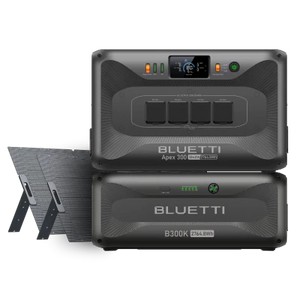











































![[Phased Out] BLUETTI B80P Expansion Battery | 806Wh](http://www.bluettipower.com.au/cdn/shop/files/202310025B80P_2000-2000px_4_4caa0c1c-4dab-4272-9e9b-2b7507e5bd81.jpg?v=1713777870&width=200)
![[Phased Out] BLUETTI B210P Expansion Battery | 2,150Wh](http://www.bluettipower.com.au/cdn/shop/files/2_08cf9ef3-03a4-4489-b641-d3edb8094896.webp?v=1716016566&width=200)
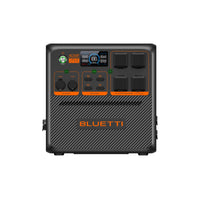


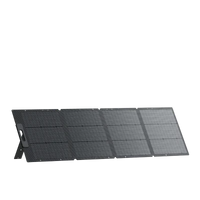


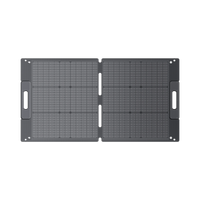











































































































![[Phased Out] BLUETTI B80P Expansion Battery | 806Wh](http://www.bluettipower.com.au/cdn/shop/files/202310025B80P_2000-2000px_4_4caa0c1c-4dab-4272-9e9b-2b7507e5bd81.jpg?v=1713777870&width=120)
![[Phased Out] BLUETTI B210P Expansion Battery | 2,150Wh](http://www.bluettipower.com.au/cdn/shop/files/2_08cf9ef3-03a4-4489-b641-d3edb8094896.webp?v=1716016566&width=120)


















